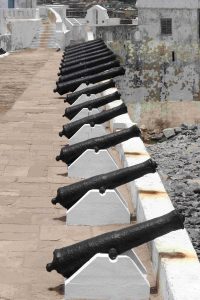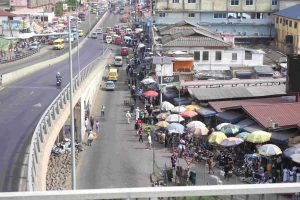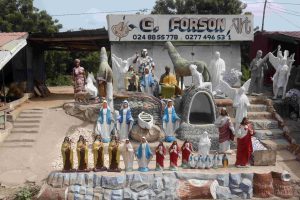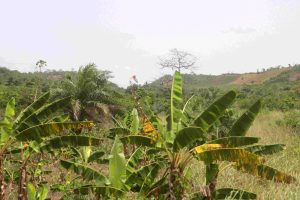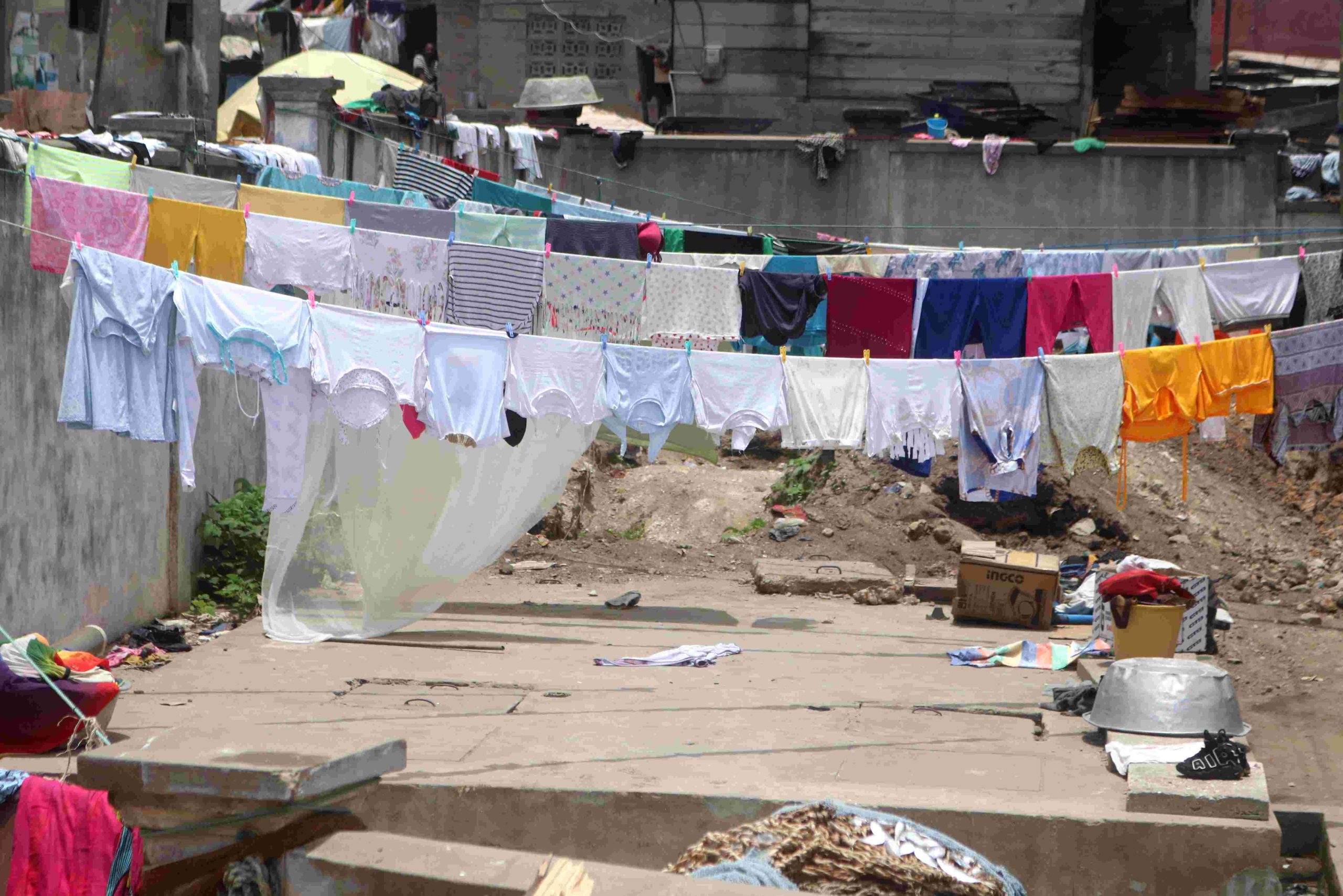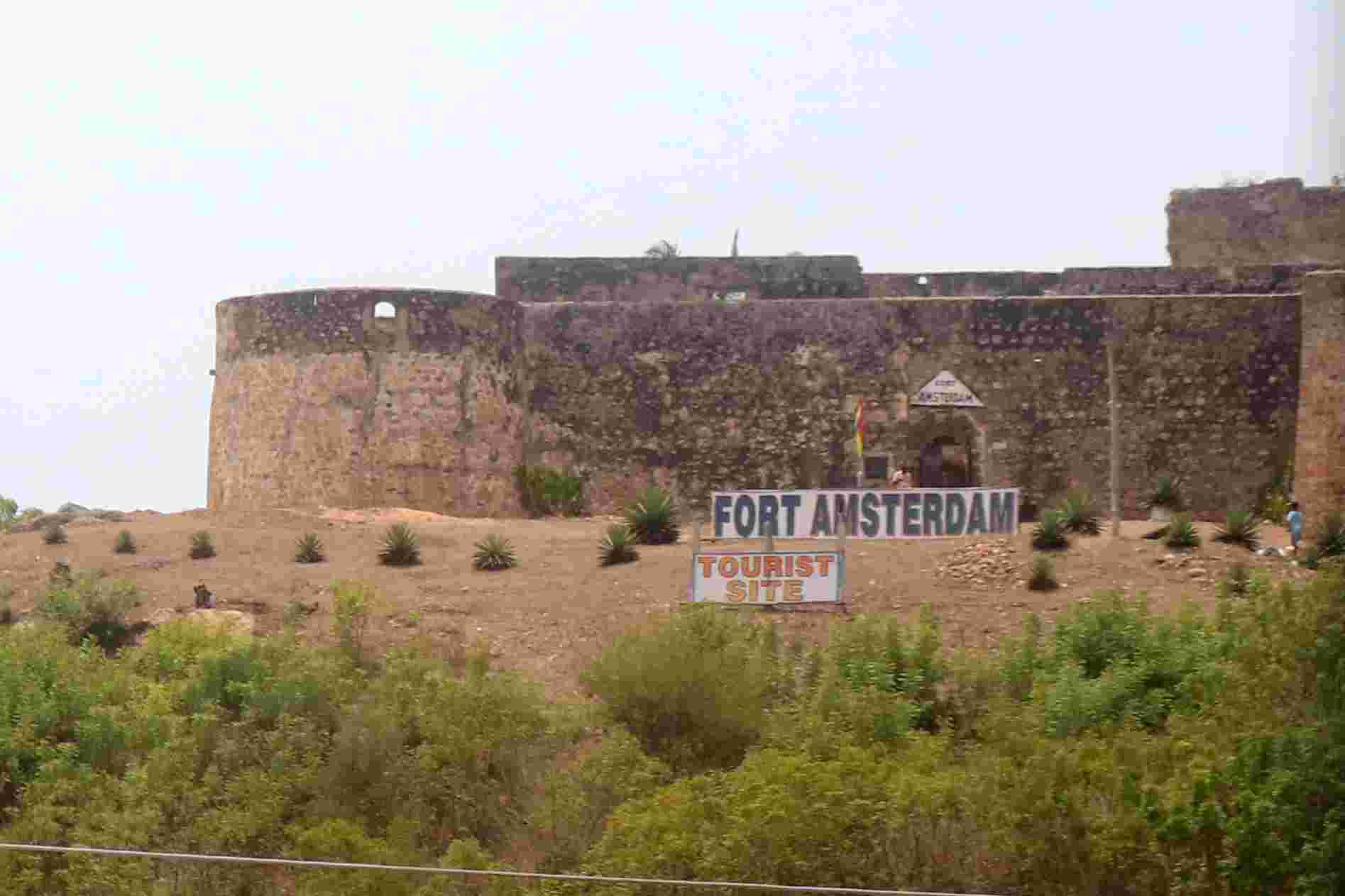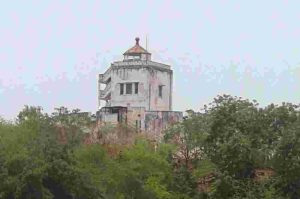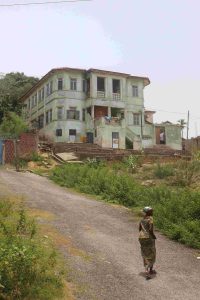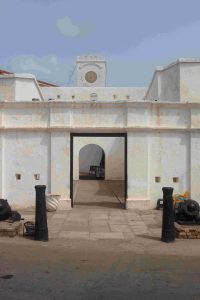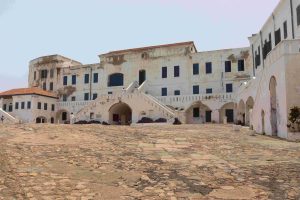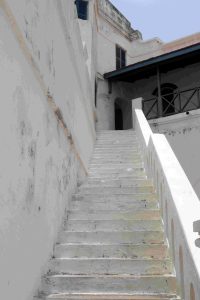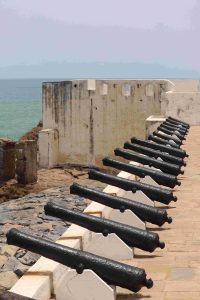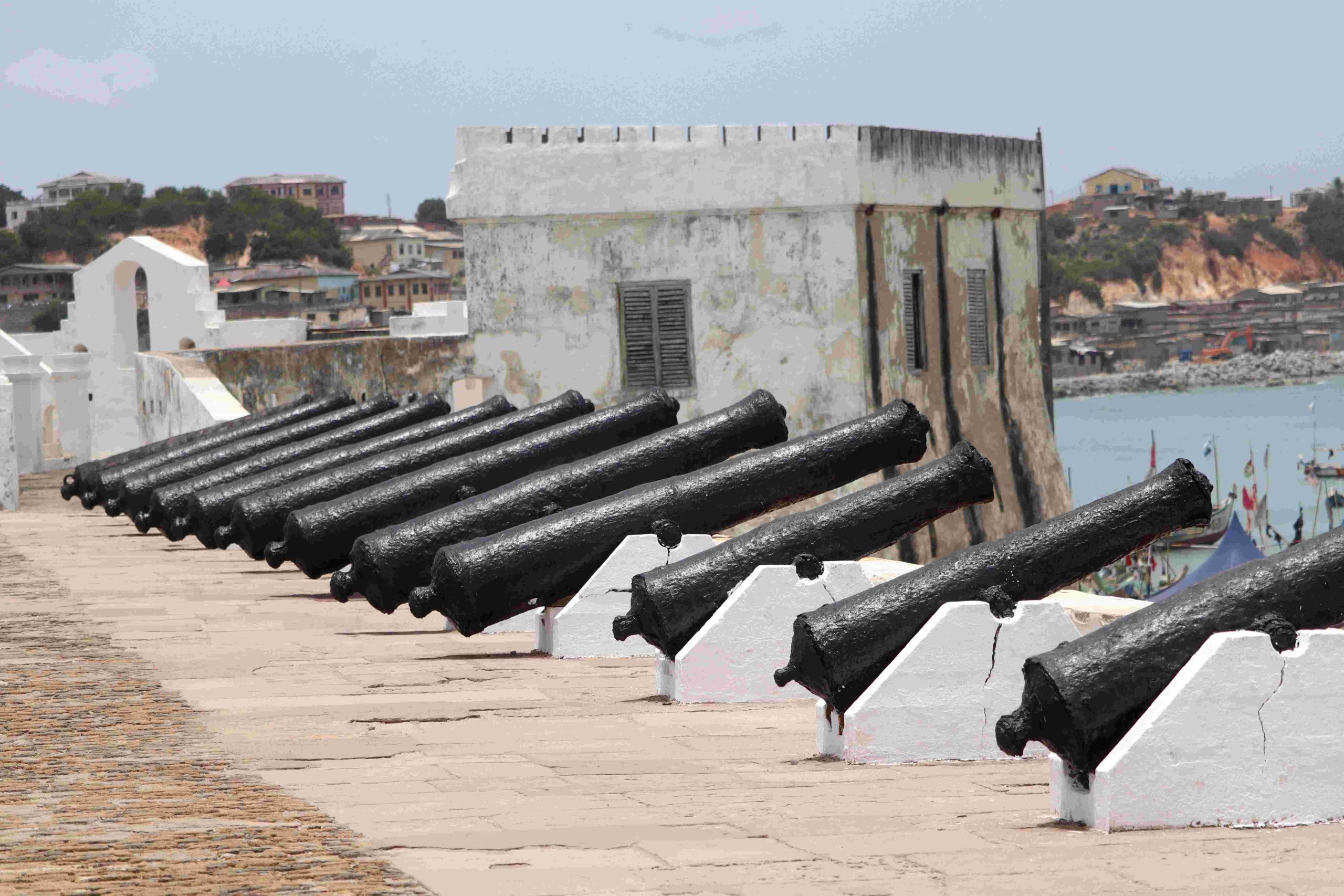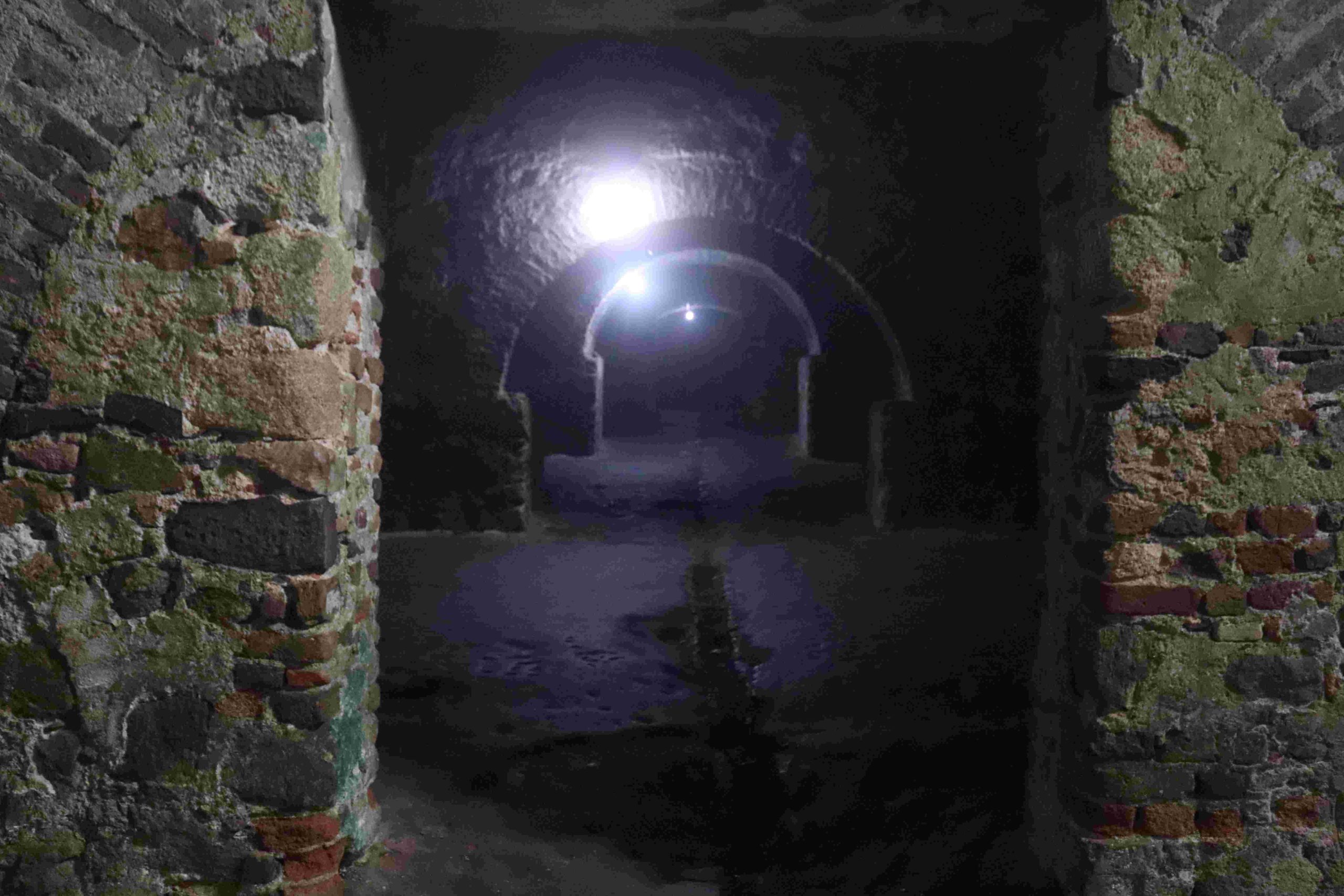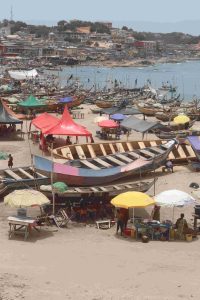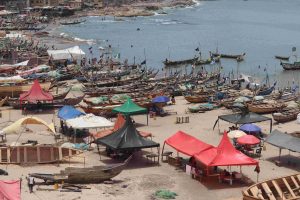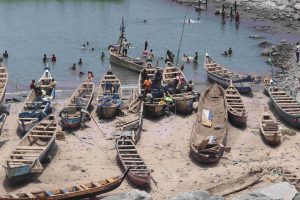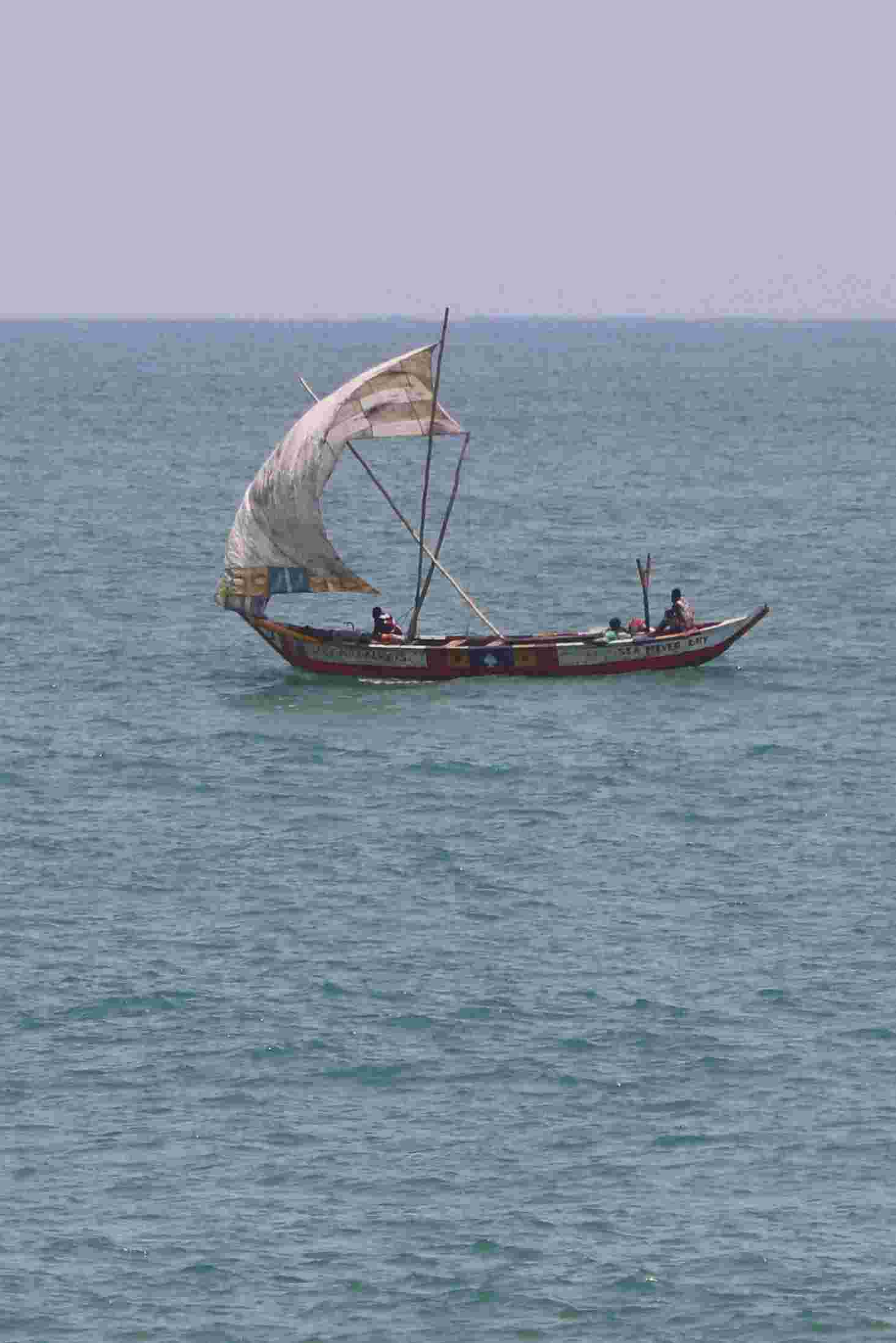We are on our way to Elmina, the place where the Portuguese were the first Europeans to build a stronghold on the African coast, in 1482. But first we need to get out of Accra, which is quite an effort. The town is equally extensive on the northern side, and several road diversions don’t help with progress. In the suburbs we are – not for the first time – confronted with the religious fervour of many Ghanaians, especially in any of the many Christians sects. We hear it, from early Sunday morning church singing, and we see it, from the many references to God, on bill boards and on all kind of buildings. And yet, here, too, we spot quite a few mosques, sometimes larger, but mostly the tiny, charming type. It seems to me that Christians and Muslims actually live together quite easily, without taking offence of each other’s habits. It is Ramadan, yet Muslims are relaxed about others continue to eat and drink during the day; in the evenings, Muslim prayer mats are extended on the pavement, yet no non-Muslim seems to be bothered.
We drive mostly along the coast, or close to the coast, and the country side is pretty similar to earlier in Ghana: green, perhaps a few more trees than before, a little hilly, palm trees, bananas, and quite a few villages, dusty and concrete. There are also the container shops, again, the ones you can easily lock at night. In the distance we spot Fort Amsterdam, but there is no time to stop. It was originally built by the British in 1645, and 20 years later conquered by the Dutch – forts changed hands often, in those days.
So did the Cape Coast Castle, which was originally Swedish, built as a timber lodge in 1653. However, politics and trade competition turned the fort first into Danish hands, and then Dutch, until during one of the Anglo-Dutch wars in Europe it was captured by the British in 1664, a year later. In the 18th Century the fort was extensively remodelled, but always maintained its primary purpose: slave trade. The Castle was the market place for trading Western goods for slaves, and was equipped with extensive dungeons, to keep up to 1000 slaves awaiting transport west.
The castle, with others part of the UNESCO World Heritage List, has been restored, but not in a disturbing manner as the Ouidah Portuguese fort, for instance. It looks authentic, even with its lines of cannons and piles of cannon balls. The dungeons feel real, too, although maybe not as lugubrious as the square cells for hundreds of slaves in the Ussher Fort in Accra. Yet, being here must have been an equally harrowing experience, with no room to move, hardly any food and worse of all, not knowing what would happen to you. Once again, seeing this is so much more powerful than reading about it. Or seeing the photos only.
Next: Elmina
Late in the afternoon we arrive in Elmina, quite a substantial town, in fact, and famous for its own castle. Which we will be exploring tomorrow.
